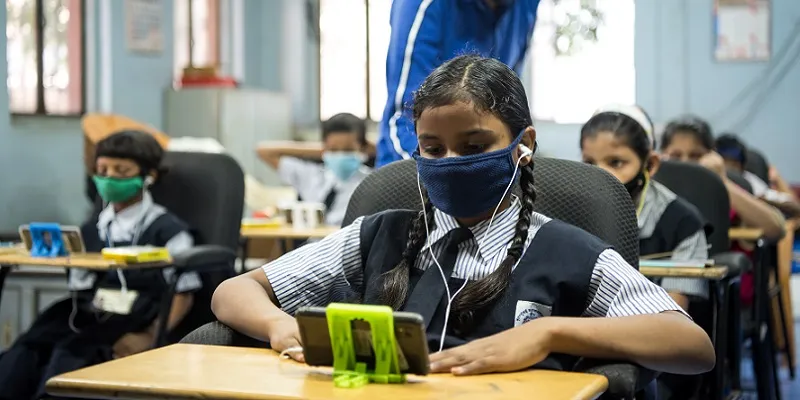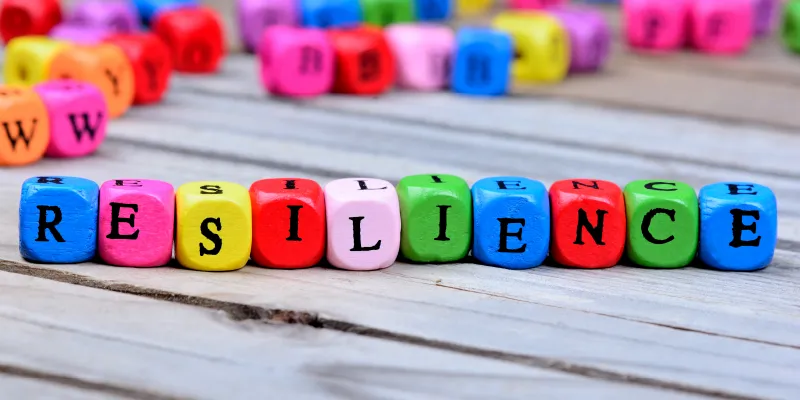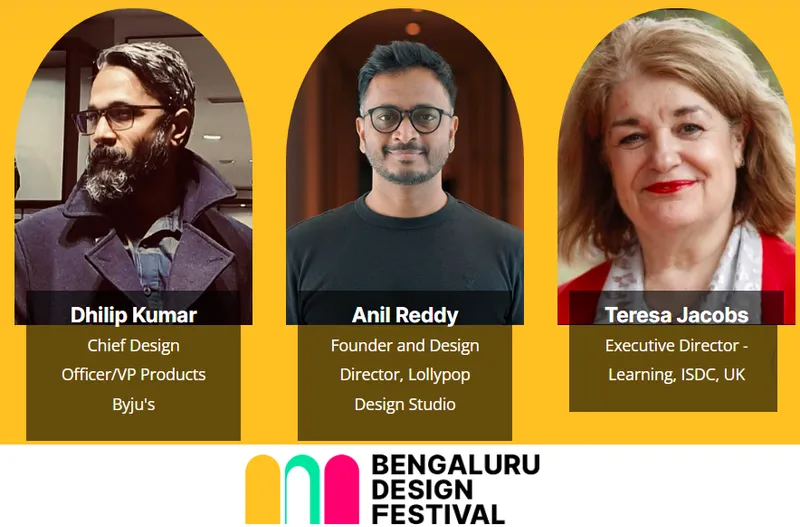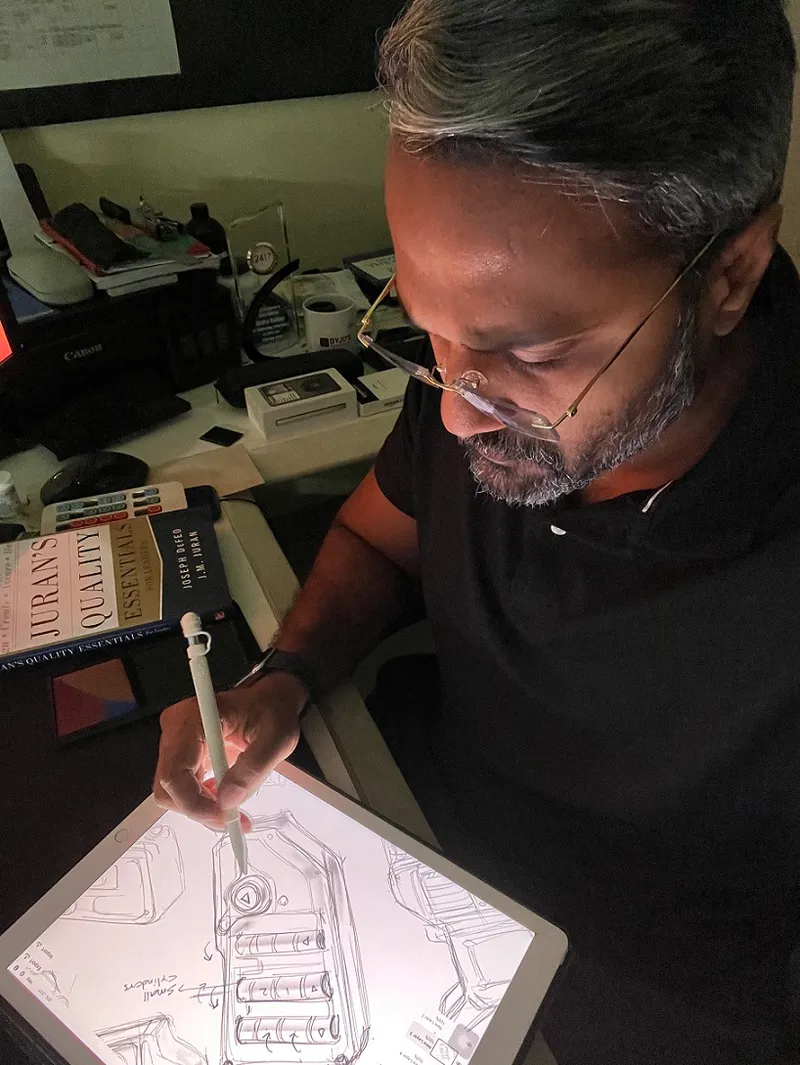Brand values, customer impact: tips from Bengaluru Design Festival by Dhilip Kumar, Chief Design Officer, BYJU'S
In our second expert interview from this international design festival, YourStory presents speaker insights on design leadership, user experience, and resilience.
Dhilip Kumar is the Chief Design Officer and VP of Products at . He was earlier Executive Art/Design Director at , Co-founder and Chief Product Officer of Kapuchin Games, and Co-founder and CEO of Zvky Design Studio, among other leadership roles.
Dhilip is also a speaker at the Bengaluru Design Festival, for which YourStory is the media partner. See YourStory’s earlier coverage of other design conferences like DesignUp from 2022, 2021, 2020, 2019, 2018, and 2017.
Dhilip’s expertise spans game building, creating learning frameworks, behavioural design, and art direction. He has around 20 years of experience in industrial design, game mechanics, brand experience, and entrepreneurship.
See also YourStory’s Book Review section with takeaways from over 350 titles, and our d-Zen (‘Design Zen’) section for more design resources.
Dhilip joins us in this interview on the role of design as a differentiator, psychological safety for innovation, and business quality.

Edited excerpts of the interview:
YourStory [YS]: What is your current field of research and activity in design?
Dhilip Kumar [DK]: I'm working on building a next-gen framework for deeper learning games using behavioural design and game mechanics. It will aid educators in teaching complex and tedious educational takeaways in a more exciting and motivating manner.
Like technology, design is a key differentiator for any product, service, or experience. It is my view that from the time of conception, creating brand values and design manifestoes are both imperative to create a sustainable business model and justifying choices.
YS: It is one thing to be a creative person – how should managers scale up organisational creativity? What are the challenges of being a design manager?
DK: Eliminate fear!
Allow people to perform at their best by ensuring they're not afraid to express ideas or concerns. Let everyone know that the goal is to achieve high quality by doing more things right and that you're not interested in blaming people when mistakes happen.
Make your team feel valued and encourage them to look for better ways to do things. Also, empower them.
Ensure that your leaders are approachable and work with teams to serve the company's best interests. Use open and honest communication to remove fear from the organisation.
YS: What are some of your design plans at BYJU'S for the coming year?
DK:
- Focus on solving the correct problems to make life better for students, parents, and educators
- Leveraging game mechanics and behavioural design to make education more engaging
- Influencing the team to work rigorously towards improving a learner's and educator's journey in a crusade to reduce variance and bring consistent learning outcomes.

YS: What are three outstanding examples you have seen of effective design during the COVID pandemic?
DK: The whole product development community has realised the importance of remote working, and they effectively started using collaboration tools like Miro and Figma.
Edtech's massive growth during COVID changed the whole learning ecosystem. Parents and stakeholders aren't shy anymore to collaborate with digital means to improve their child's learning journey.
COVID and remote working gave birth to the phygital domain, where users wanted to touch, feel, and have real-life-like experiences even from remote locations. Meta became a big word during COVID.
History has always shown us that during a recession or in any pandemic situation, humans tend to play games and entertain themselves a lot to keep the dopamine in place. This created a colossal tailwind of investments in the Indian gaming industry. Before that, VCs were shy to invest in the binary gaming sector.
YS: In the post-pandemic era, what is the key role of designers?
DK: Developing frameworks to keep connected with users and their operating conditions without meeting them in person has been an ongoing exercise. Creating design systems that are resilient to change that can rotate between remote and live contexts has been the primordial responsibility.
Phygital and bringing in VAKT (Visual, Auditory, Kinesthetic, and Tactile) ability became a trend in design to mimic the metaphor of real life. Though we are far from there, with the help of computer vision capability and wearables design, we are trying to bridge the gap. Products like Ultrahuman and OSMO are the best examples.
YS: How should designers strike that delicate balance between 'Stick to your vision' and 'Adapt to a changed world?
DK:
1. Create a constant purpose towards improvement
- Plan for systems and quality in the long term
- Resist reacting with short-term solutions
- Don't just do the same things better – find better things to do
- Predict and prepare for future challenges, and always aim to get better.
2. Stop depending on inspections
- Inspections are costly and unreliable and they don't improve quality; they merely find a lack of quality
- Use statistical control methods–not physical inspections alone–to prove that the process is working.

Bengaluru Design Festival 2022 - speakers
YS: Is there such a thing as the 'ideal age' for a creative person, or can the creative bug strike you at any time? How should people keep themselves open to adopting a creative career later in life?
DK: Humans are inherently creative right from birth. We are inquisitive creatures, and that is how we move from continent to continent, even without any technology.
All we have to do is foster this mindset right from the early years. Questions are more powerful than answers, and encouraging kids to ask questions empowers them to find their path to creativity.
YS: Many of our readers are techie founders. What's your advice to them on when and how they should integrate design into their startup journeys?
DK: Design thinking should start before technology. As Steve Jobs said, "You have to start with the customer experience and work backwards to the technology.”
That is how we can solve for humans. Design thinking helps to diverge and avoid product myopia caused by powerful technologies. Technology is a very powerful influencer. It always clouds us from seeing our fellow humans in the end.
In one line: Put humans First.

Dhilip Kumar
YS: What are the success factors for government and industry to work together and grow the field of design in their countries?
DK: Collaboration and avoiding working in silos are key to bringing high quality. Friction is the quality killer.
The aim of governments should also be towards a better life for everyone.
That's how Japan reached to top in delivering quality. They believed that change comes from about and not from below. Japan implemented quality management principles throughout the country.
Japan has instituted the Demings Award for excellence in companies by setting a high-quality bar. They learnt from the US and became better than them.
YS: What is your parting message to the startups and aspiring designers in our audience?
DK: In our neighbourhood, we are the only life, and humans are the only beings with a conscience. We must work hard and constantly to create value for our fellow beings. Consistency is the key to quality.
Learn from masters, and read a lot about the history of architecture and design.
Keep in mind that form follows function. This will guide you like it guided many!
Edited by Suman Singh










